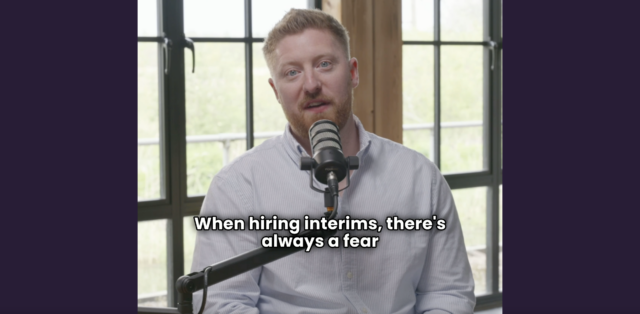Let’s Be Honest: Most Job Descriptions Are Awful
If your job ad looks anything like this…
“We’re looking for a dynamic, results-driven self-starter with excellent communication skills to join our fast-paced team.”
…then congratulations! You’ve written the most boring, generic job description ever.
The problem?
•It tells candidates nothing. (What does “dynamic” even mean in finance?)
•It sounds like every other job ad. (So why would they apply to yours?)
•It attracts the wrong people. (The best candidates don’t respond to fluff—they want real detail.)
If you want to stand out in a crowded hiring market, your job descriptions need to be clearer, sharper, and actually interesting to read.
Here’s how to write a job ad that doesn’t put top candidates to sleep:

1. Stop Using Corporate Buzzwords That Mean Nothing
Let’s play job ad bingo—have you used any of these phrases?
- “Fast-paced environment” (Translation: No one has time to train you.)
- “We’re like a family” (Translation: We expect unpaid overtime.)
- “Must be a team player” (Translation: You’ll be doing everyone else’s work.)
- “Competitive salary” (Translation: We don’t want to tell you the number.)
- “Self-starter” (Translation: We have no onboarding process.)
Why this is a problem:
- Candidates ignore vague descriptions. (Everyone says they want “team players.” Be specific.)
- Top talent wants clarity. They don’t want to guess what the role is really about.
- It makes your business sound like every other employer.
What to do instead:
- Be direct. If the job requires Excel wizardry and P&L ownership, say it.
- Explain the work culture properly. If your team is highly collaborative, what does that actually mean?
- Use real language. Imagine you’re explaining the role to a colleague, not writing corporate jargon for a press release.
📢 Rule of thumb: If your job ad could apply to any company, rewrite it.
2. Lead With What’s Actually Exciting About the Job
Most job ads start with a dull paragraph about the company, such as:
“We are a leading provider of [something corporate] with a strong reputation in [something vague]. We pride ourselves on excellence, innovation, and teamwork.”
Why this is a problem:
Guess what? Candidates don’t care (yet). The first thing they want to know is:
- What’s the job?
- Why is this a great opportunity?
- What will I actually be doing every day?
What to do instead:
- Lead with the hook. “Own the finance function for a £100M business” is more exciting than “We’re a market leader in our space.”
- Sell the opportunity. Why is this role better than their current one? More responsibility? Bigger projects? A step toward FD?
- Keep company info brief. They’ll Google you if they’re interested—focus on why this role is exciting.
📢 Rule of thumb: If the first paragraph isn’t grabbing attention, rewrite it.
3. Be Specific About Salary (Yes, Really)
If your job description says “competitive salary”, you’re already losing candidates.
Why this is a problem:
- Candidates won’t apply if they think it’s too low.
- It wastes everyone’s time. Why bring someone through 3 rounds of interviews just for them to reject the offer?
- Your competitors are being transparent. If they list salaries and you don’t, guess where candidates will apply first?
What to do instead:
- List a salary range. If it’s £80K-£90K, just say it.
- Mention bonuses or incentives. If there’s equity, performance bonuses, or career growth, make that clear.
- Use salary benchmarking. (Hello, We Do Benchmark!) Make sure you’re actually paying the market rate.
📢 Rule of thumb: If you don’t put a number, candidates will assume it’s low.
4. Make the Role & Responsibilities Crystal Clear
Biggest mistake in job ads? Listing responsibilities like a laundry list:
“You will be responsible for managing financial reporting, forecasting, stakeholder engagement, budgeting, and process improvements.”
Cool. But what does that actually mean?
What to do instead:
- Break it into sections.
- Make it easy to read.
- Add real examples where possible.
Good example:
What you’ll do:
- Own the P&L for a £50M revenue business unit.
- Lead the budgeting process, working closely with the CFO & department heads.
- Drive commercial finance initiatives, advising leadership on cost-saving opportunities.
- Manage a small team (2 direct reports) and support their development.
📢 Rule of thumb: If a candidate can’t picture what they’ll be doing in the first week, rewrite it.
5. Sell Your Company (But Make It Sound Like a Real Place to Work)
Candidates aren’t just choosing a job—they’re choosing where they’ll spend 40+ hours a week.
If your “About Us” section is full of corporate waffle, they’ll switch off.
What to do instead:
- Tell them why people actually like working there.
- Show personality. If your culture is “fast-paced,” does that mean “exciting” or “stressful”?
- Mention team dynamics. Do finance and ops work closely together? Will they get leadership exposure?
Good example:
Why join us?
- Growth-focused business. We’ve doubled revenue in the past three years and aren’t slowing down.
- You’ll have real influence. Work directly with the CFO and leadership team.
- A role with progression. We actively promote from within—our last hire is now Finance Director.
📢 Rule of thumb: If your company description sounds like it was written by AI, rewrite it.
6. Keep It Short & Easy to Skim
No one reads a wall of text.
If your job ad is longer than an essay, candidates won’t finish reading it.
How to fix it:
- Use bullet points.
- Keep paragraphs short.
- Stick to the essentials—ditch the fluff.
📢 Rule of thumb: If it looks like a chore to read, candidates won’t bother.
Final Thought: Write Job Descriptions That Actually Work
If your job ad sounds like every other one on the market, don’t be surprised when candidates scroll past it.
Smart businesses are:
- Cutting the buzzwords.
- Listing salary ranges.
- Selling the job, not just listing tasks.
- Making it easy to read.
- Being clear about what makes them different.
Need help making your job descriptions stand out?
We Do Benchmark can make sure your salary is competitive.
We Do Group can help you hire top finance talent who actually say “yes” to your offers.





